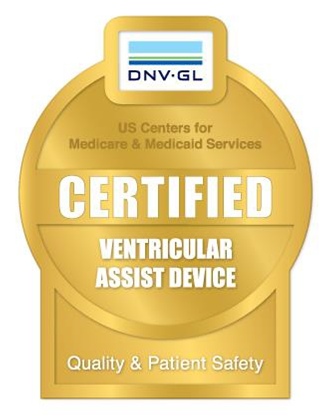Heart Failure and LVAD Implant Management
 A left ventricular assist device, or LVAD, is a mechanical pump that is surgically implanted in patients to slow the progress of severe congestive heart failure. An LVAD assists a faulty left ventricle in pumping blood. Post-surgery, patients are trained in the management of a companion control device which regulates and monitors the LVAD. Patients who receive an LVAD are either bridge-to-transplant as they wait for a new heart on the heart transplant list, or destination therapy, in which the LVAD serves as a long-term heart failure solution.
A left ventricular assist device, or LVAD, is a mechanical pump that is surgically implanted in patients to slow the progress of severe congestive heart failure. An LVAD assists a faulty left ventricle in pumping blood. Post-surgery, patients are trained in the management of a companion control device which regulates and monitors the LVAD. Patients who receive an LVAD are either bridge-to-transplant as they wait for a new heart on the heart transplant list, or destination therapy, in which the LVAD serves as a long-term heart failure solution.
How does it work?
 The LVAD implant is performed by a cardiovascular surgeon during open heart surgery. The implant is placed into the apex of the heart. The blood is then delivered through a tube to the aorta.
The LVAD implant is performed by a cardiovascular surgeon during open heart surgery. The implant is placed into the apex of the heart. The blood is then delivered through a tube to the aorta.
Both the LVAD cable and controller are attached to the pump and produce messages and alarms to assist in operating the system.
Am I a good candidate for treatment?
An LVAD implant may be an option for patients that are experiencing end-stage heart failure. A Deborah® physician will determine if a patient is an appropriate candidate. Patients with preexisting conditions may not be eligible for LVAD.
What can I expect after treatment?
After receiving an LVAD implant, patients will be given guidelines on how to safely and properly manage the device. Each patient will be instructed to have multiple follow up visits with a physician to ensure the implant is working correctly.
